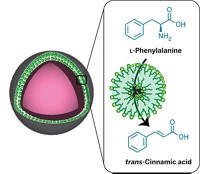Advertisement
Grab your lab coat. Let's get started
Welcome!
Welcome!
Create an account below to get 6 C&EN articles per month, receive newsletters and more - all free.
It seems this is your first time logging in online. Please enter the following information to continue.
As an ACS member you automatically get access to this site. All we need is few more details to create your reading experience.
Not you? Sign in with a different account.
Not you? Sign in with a different account.
ERROR 1
ERROR 1
ERROR 2
ERROR 2
ERROR 2
ERROR 2
ERROR 2
Password and Confirm password must match.
If you have an ACS member number, please enter it here so we can link this account to your membership. (optional)
ERROR 2
ACS values your privacy. By submitting your information, you are gaining access to C&EN and subscribing to our weekly newsletter. We use the information you provide to make your reading experience better, and we will never sell your data to third party members.
Business
Melamine Toxicity Clarified And New Test Developed
Researchers elucidate how milk adulterant causes injury and develop a sensitive assay for the compound in infant formula
by Carmen Drahl , Jyllian Kemsley
February 18, 2013
| A version of this story appeared in
Volume 91, Issue 7
In 2008, infant formula intentionally doctored with the toxic compound melamine to fraudulently boost apparent protein content sickened an estimated 300,000 babies in China and killed six from kidney damage. Two new reports each address a different question that arose in the scandal’s wake: how melamine toxicity occurs, and how to rapidly and cheaply detect it in foods. A team led by Aihua Zhao and Wei Jia of China’s Shanghai Jiao Tong University investigated the role of intestinal bacteria in melamine toxicity (Sci. Transl. Med., DOI: 10.1126/scitranslmed.3005114). They determined that Klebsiella terrigena can convert melamine to cyanuric acid in the intestines of rats. The two compounds aggregate through hydrogen bonding and precipitate in the kidney, causing damage. Meanwhile, Xiaoya Hu of China’s Yangzhou University and colleagues have developed an assay that detects subnanomolar melamine in infant formula powders (J. Agric. Food Chem., DOI: 10.1021/jf304034e). Safety agencies test milk-based products for melamine, but most techniques require sophisticated instruments. Hu’s team first oxidizes melamine electrochemically. The oxidized melamine grafts to an electrode. Then the team couples the enzyme horseradish peroxidase to the grafted melamine. They dip the combination electrode into a solution, forming a colored product measurable with a spectrophotometer.





Join the conversation
Contact the reporter
Submit a Letter to the Editor for publication
Engage with us on Twitter